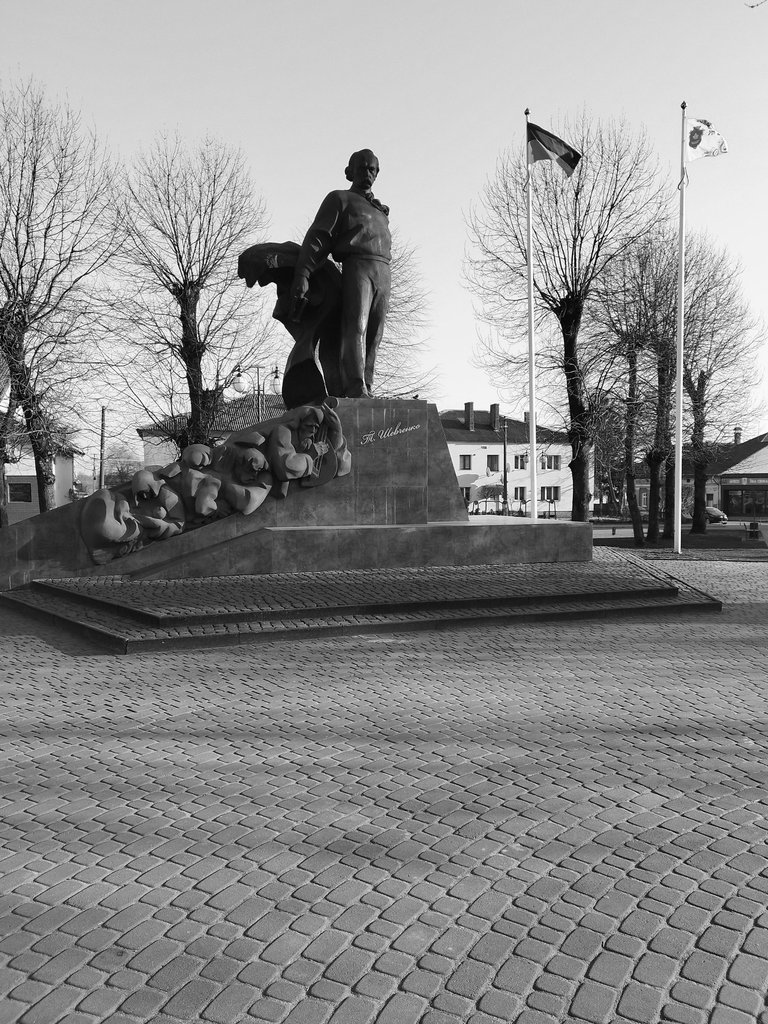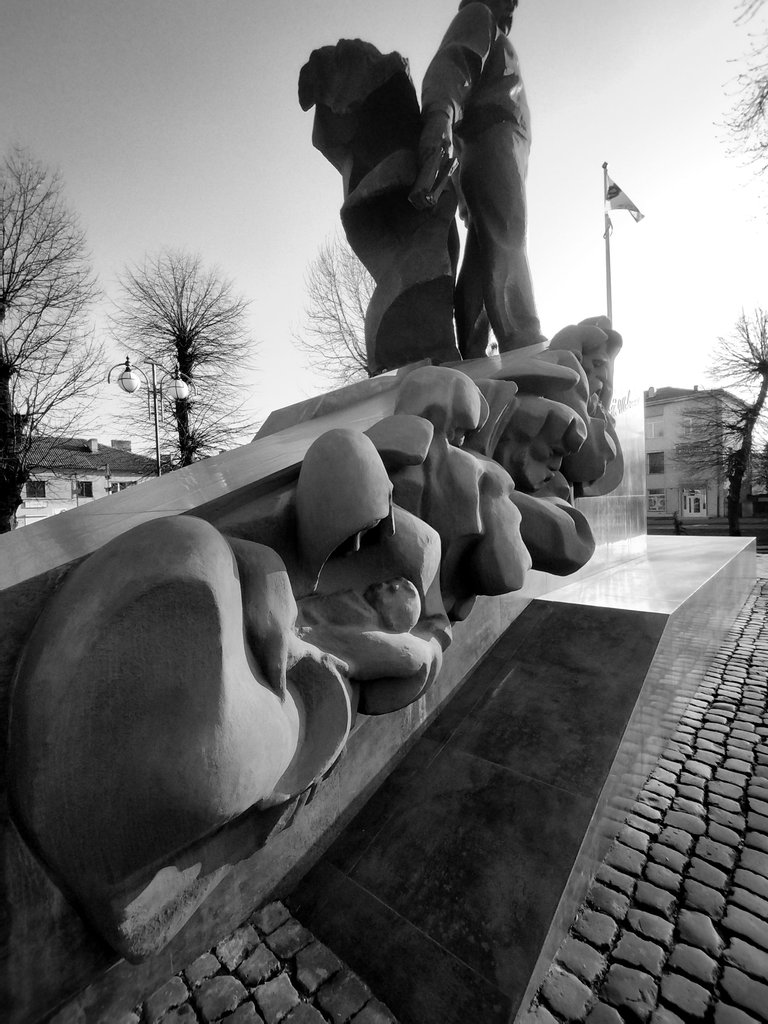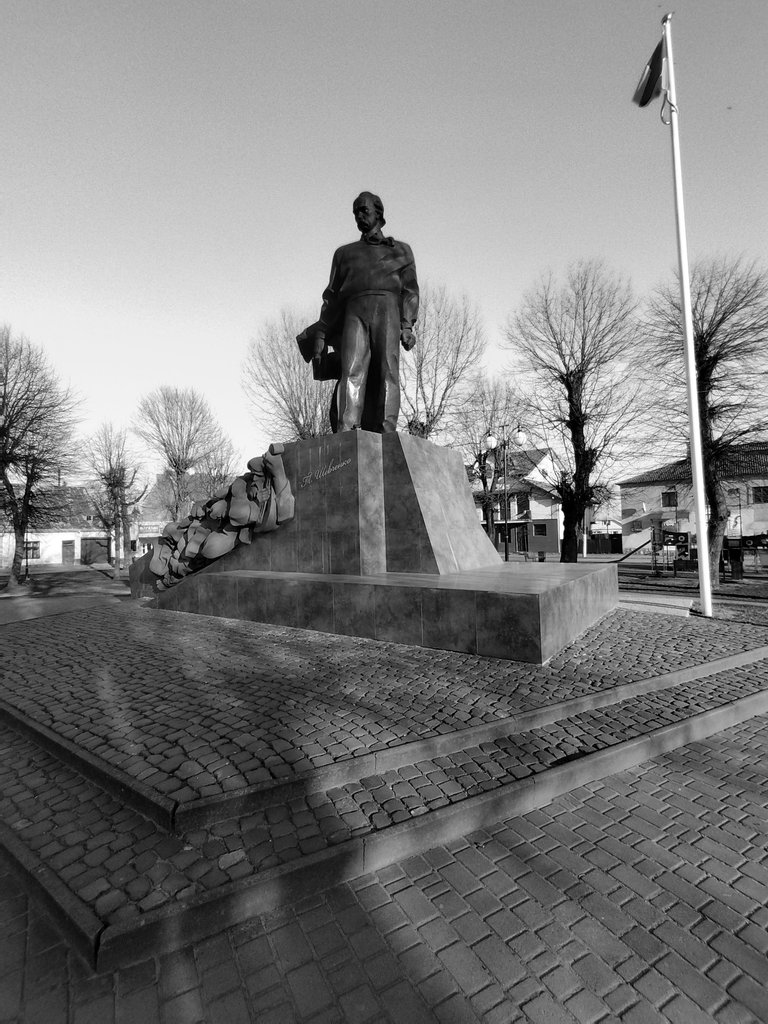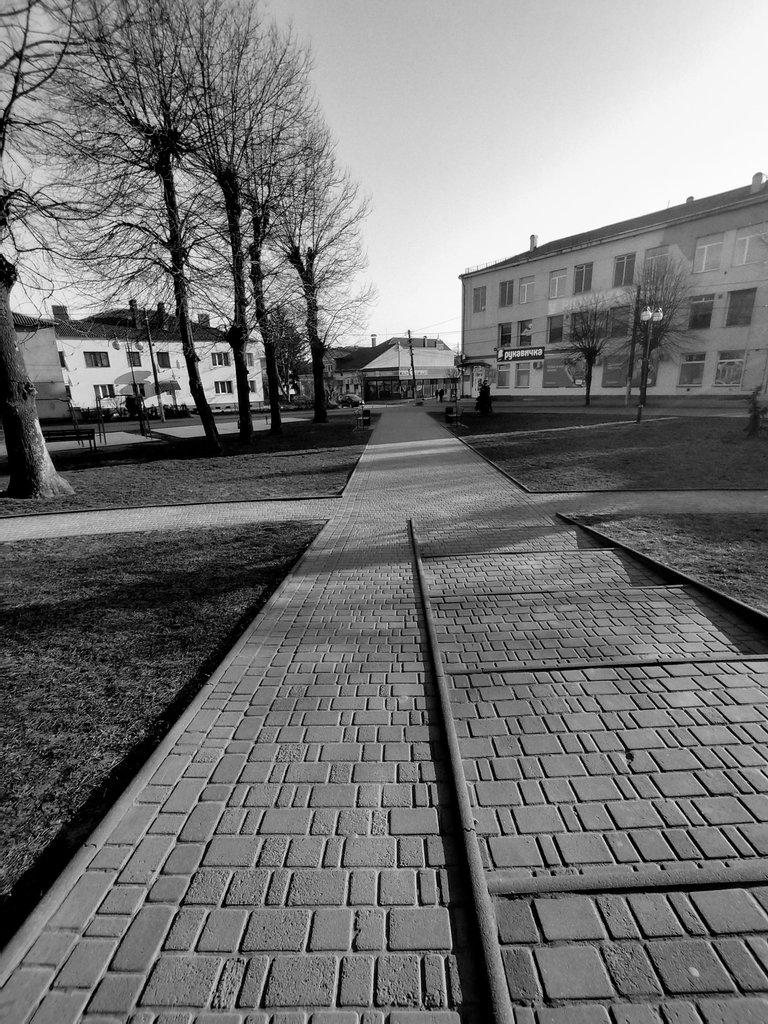Monomad Contest. Monument to T. Shevchenko
(Edited)

| En | Ua |
|---|---|
| Last weekend, I had to visit the center of our district, the town of Yavoriv, for some errands. While walking through the central square, I stopped in the park that stretches across Rynok Square. Like in Lviv, this is a historical name typical for settlements that emerged or flourished in the Middle Ages. In the center of the park stands a monument to Taras Shevchenko—a figure impossible to overlook. It is made of forged copper, which has darkened over time, and a pedestal of marble chips. At the base of the monument, there is an interesting bas-relief. I am not sure exactly who is depicted on it, but you can distinguish a kobzar with a bandura. And that makes perfect sense, as Shevchenko himself was called the Great Kobzar. His work resonates with the folk song tradition, and his words were always truthful and sharp as a sword. Taras Shevchenko is an exceptional figure in Ukrainian history. A poet, artist, and thinker, he did not just write poetry—he changed people's consciousness. His works became the voice of the Ukrainian people, their pain, their longing for freedom and justice. His poetry was not just literature—it was a form of resistance. In his writings, Shevchenko openly spoke about the injustice of his time, the hardships of the peasants, and the oppression and enslavement of the Ukrainian people. And for this truth, he faced persecution, arrests, and exile. Yet even in captivity, he did not fall silent or renounce his calling. Looking at this monument, I thought about how relevant his words remain even today. Times change, but the struggle for truth, dignity, and freedom continues. His calls for unity and national consciousness still resonate with us today, as if he wrote them for our time. | Минулими вихідними мені довелося побувати у справах у центрі нашого району – місті Яворові. Прогулюючись центральною площею, я зупинився у сквері, що розкинувся на площа Ринок. Подібно до Львова, це історична назва, притаманна населеним пунктам, що виникли або досягли розквіту в середньовіччі. У центрі скверу височіє пам’ятник Тарасові Шевченку – постать, яку не можна оминути увагою. Він виготовлений із кованої міді, яка потемніла від часу, та мармурової крихти постаменту. В основі монумента розташований цікавий барельєф. Я не знаю точно, хто на ньому зображений, але можна розгледіти кобзаря з бандурою. І це цілком логічно, адже самого Шевченка називали Великим Кобзарем. Його творчість перегукується з народною пісенною традицією, а його слово завжди було правдивим і гострим, як меч. Тарас Шевченко – постать виняткова в історії України. Поет, художник, мислитель, він не просто писав вірші – він змінював свідомість людей. Його творчість стала голосом українського народу, його болю, прагнення до волі та справедливості. Його поезія не була просто літературою – вона була боротьбою. У своїх творах Шевченко відкрито говорив про несправедливість, яка панувала в його часи, про важку долю селян, про поневолення і гноблення українського народу. І саме за цю правду він зазнав переслідувань, арештів, заслання. Але навіть у неволі він не замовк, не зрікся свого покликання. Дивлячись на цей пам’ятник, я подумав: наскільки актуальними залишаються його слова навіть сьогодні. Час змінюється, але боротьба за правду, за гідність, за свободу триває. Його заклики до єдності, до національної свідомості звучать і в наші дні так, ніби він написав їх для нас. |





0
0
0.000
A special pleasure when we visit many cities is when we see many historical monuments in every corner of the city.
Absolutely! Historical monuments add a unique charm to every city, telling stories of its past and cultural heritage. Each statue, building, or memorial is like a window into history, making every walk through the city even more fascinating.